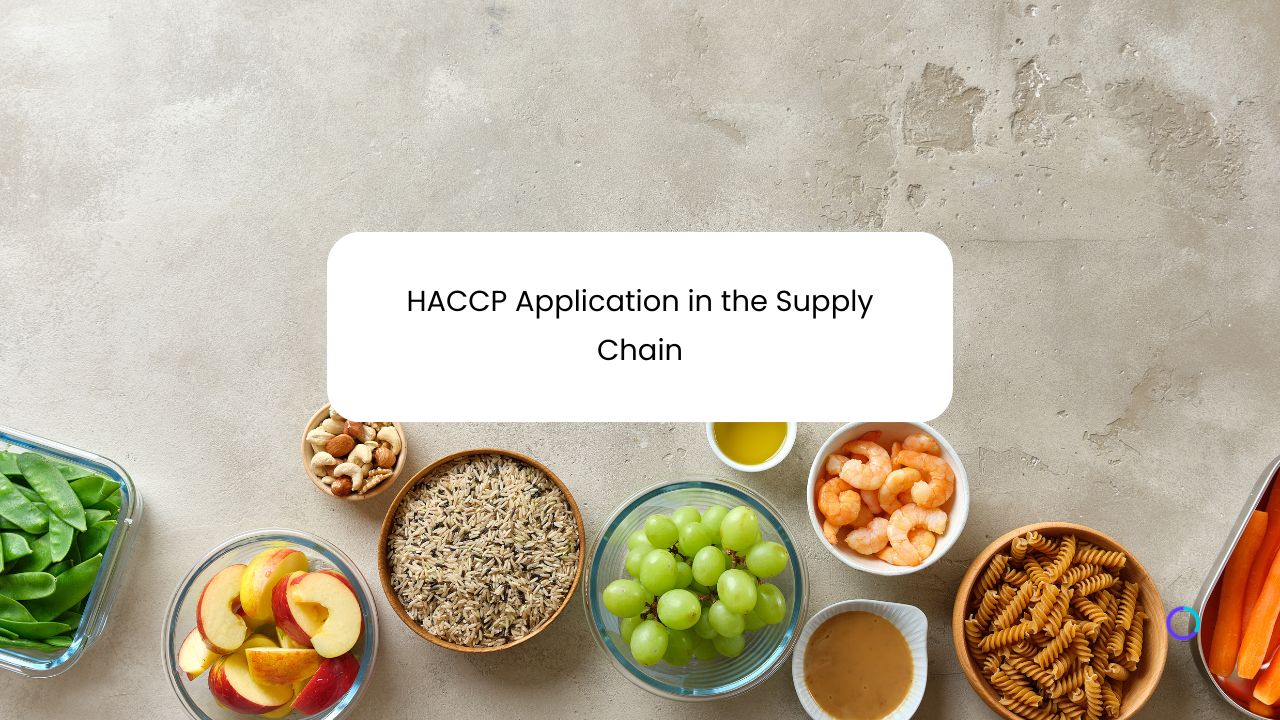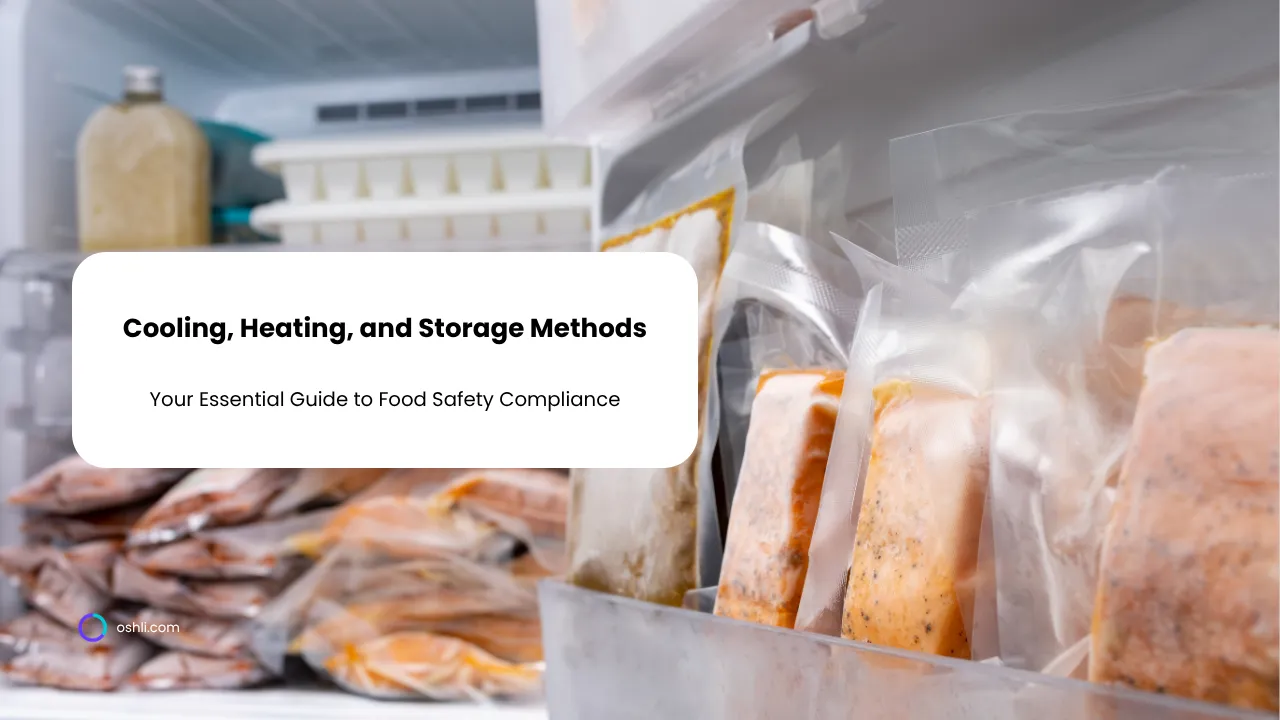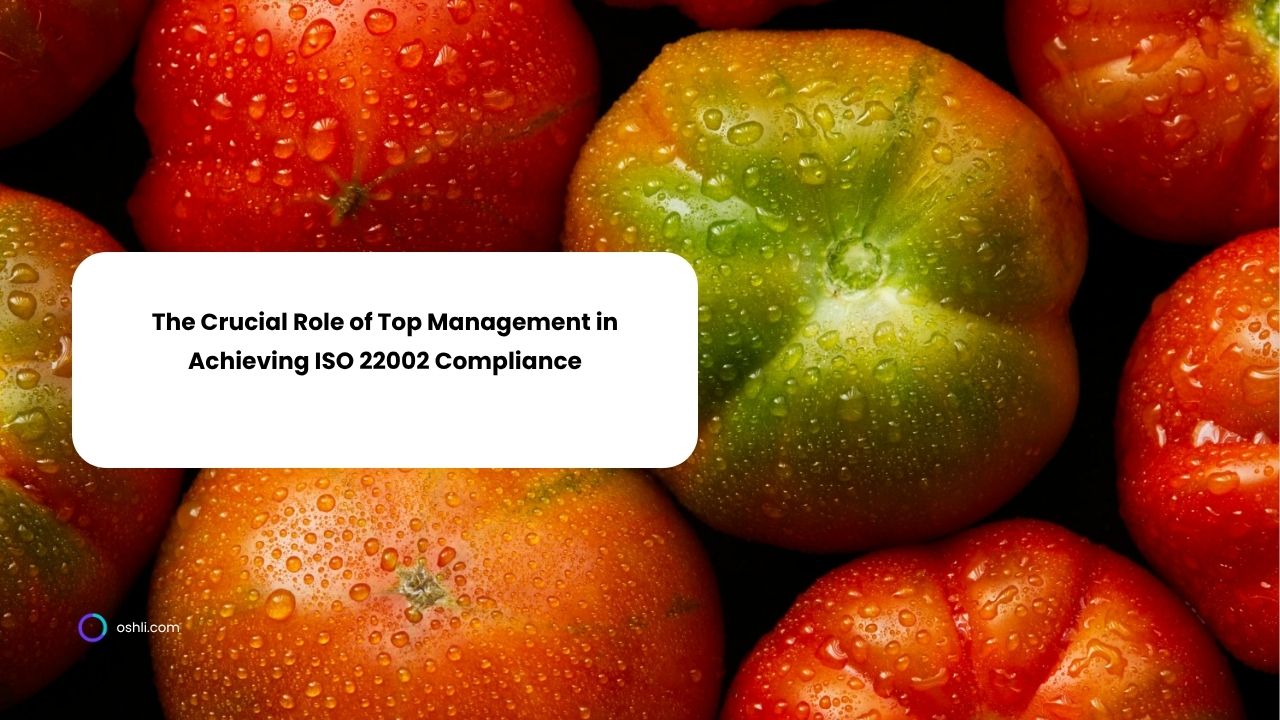
HACCP Application in the Supply Chain
Table of Contents
- Introduction to HACCP in the Food Supply Chain
- The Application in Packaging Production
- The Hazards in Feed Food Supply Chain
- The Application in Primary Production
- The HACCP in Manufacturing
- The HACCP in Supermarket
- The Reflection of the HACCP Application in the Food Supply Chain
- Conclusion
Introduction to HACCP in the Food Supply Chain
The Hazard Analysis and Critical Control Points (HACCP) system is a globally recognized methodology designed to identify, evaluate, and control food safety hazards. Initially conceptualized for space missions by NASA and its partners, HACCP has become an essential framework for modern food supply chains. From the moment raw materials are sourced to the time finished products reach consumers, each step in the process must be scrutinized to prevent biological, chemical, and physical hazards.
Over the years, HACCP has evolved from a niche concept into a mandatory or recommended practice in many countries. Regulatory bodies like the U.S. Food and Drug Administration (FDA), the European Commission, and global standards organizations such as Codex Alimentarius emphasize the importance of implementing HACCP principles. As consumer demand for safe and high-quality food continues to grow, businesses across the supply chain—from packaging manufacturers and feed suppliers to primary producers, food manufacturers, and supermarkets—have adopted HACCP to uphold stringent safety standards.
In this comprehensive article, we will explore how HACCP is applied at different stages of the food supply chain. We will delve into:
- Packaging Production
- Hazards in the Feed Food Supply Chain
- Primary Production
- Food Manufacturing
- Supermarket Operations
- Reflections on HACCP Implementation Across the Supply Chain
By understanding these segments and how HACCP principles integrate, businesses and stakeholders can ensure a seamless approach to food safety, ultimately protecting consumers and bolstering brand trust.
The Application in Packaging Production
1. The Role of Packaging in Food Safety
Packaging plays a critical role in protecting food products from contamination, physical damage, and environmental influences like moisture and oxygen. Although the packaging itself is not consumed, it significantly impacts food safety by acting as a barrier against external hazards. For instance, compromised packaging could expose food to pathogens or chemicals, jeopardizing consumer health.
2. HACCP Principles in Packaging
While many think of HACCP as purely a food production concept, it also applies to packaging production:
Hazard Analysis
- Biological Hazards: Though less common in packaging than in food, microbial contamination can occur on surfaces if the packaging material is stored in unsanitary conditions or if water intrusion happens during production.
- Chemical Hazards: The use of inks, adhesives, and other chemicals in packaging processes can lead to chemical migration into the food product.
- Physical Hazards: Fragments of packaging materials (e.g., plastic shards, glass from jars, or metal from can linings) can become physical contaminants.
Critical Control Points (CCPs)
- Material Inspection: Incoming materials, such as paperboard, plastics, or metal sheets, should be inspected for defects or contaminants.
- Printing and Coating: The application of inks and coatings is a potential CCP where chemical hazards must be strictly controlled.
- Sealing Processes: Improper sealing can compromise the package’s integrity, leading to contamination risks.
Monitoring and Verification
- Inspection Protocols: Regular checks on packaging lines, seal integrity, and packaging materials.
- Record-Keeping: Documentation of supplier quality, chemical usage, and sanitation procedures.
- Calibration of Equipment: Ensuring that sealing machines and cutting tools operate within specified tolerances.
Corrective Actions
- Isolation of Defective Batches: If a packaging batch is found to be compromised, it must be quarantined and reworked or discarded.
- Root Cause Analysis: Identifying whether a machine malfunction, employee error, or supplier issue led to the problem.
3. Best Practices in Packaging Production
- Supplier Management: Work with reputable suppliers who provide certified materials and adhere to strict quality controls.
- Integrated Pest Management (IPM): A clean environment free of pests reduces the risk of biological contamination on packaging surfaces.
- Employee Training: Staff should be well-versed in hygiene, handling of chemicals, and operating machinery.
- Traceability Systems: Implement robust systems to track batches of packaging materials, enabling swift recalls if contamination is discovered.
By applying HACCP principles to packaging production, businesses can help ensure that the packaging process does not introduce or exacerbate hazards, thereby maintaining the overall integrity of the food supply chain.
The Hazards in Feed Food Supply Chain
1. Understanding the Feed Food Supply Chain
The feed food supply chain involves the production, handling, and distribution of animal feed. This feed can be intended for livestock (e.g., cattle, poultry, swine) or companion animals (e.g., dogs and cats). The safety of animal feed is crucial because contaminants can pass from animals to humans through meat, milk, and eggs. Hence, feed manufacturers and distributors have a direct impact on public health.
2. Common Hazards in Feed
Biological Hazards
- Salmonella and E. coli: Bacterial contamination in raw materials such as grains or meat by-products.
- Molds and Mycotoxins: Improper storage of grains can lead to mold growth and the production of toxins (e.g., aflatoxin).
Chemical Hazards
- Pesticide Residues: Grains treated with pesticides can retain residues that are harmful if consumed in large quantities.
- Heavy Metals: Lead, arsenic, or mercury can accumulate in certain raw materials or water sources.
- Veterinary Drug Residues: Antibiotics or growth promoters in feed components.
Physical Hazards
- Foreign Objects: Stones, metal fragments, or plastic pieces from damaged equipment can enter the feed during milling or mixing.
3. Applying HACCP to Feed Production
- Hazard Analysis: Assess raw materials, storage facilities, and production processes for possible sources of contamination.
- CCP Identification: Steps such as ingredient reception, grinding, and mixing can be critical. For instance, a metal detector at the end of the production line may serve as a CCP to eliminate foreign objects.
- Monitoring Protocols: Conduct periodic microbial testing of raw materials, measure moisture levels to prevent mold growth, and maintain temperature/humidity controls in storage.
- Corrective Actions: If a batch is found to have elevated mycotoxin levels, isolate and dispose of it safely. Investigate whether the cause was improper storage or supplier issues.
4. Best Practices and Regulations
- Supplier Approval Program: Work with suppliers who follow Good Agricultural Practices (GAP) and can provide Certificates of Analysis (COAs).
- Good Manufacturing Practices (GMP): Maintain sanitary conditions, use food-grade lubricants, and ensure routine equipment maintenance.
- Traceability Systems: Track each batch of feed from raw materials to final product. This makes recalls faster and more effective if contamination is detected.
- Regulatory Compliance: Many regions have specific feed safety regulations, such as the FDA’s Current Good Manufacturing Practice (CGMP) requirements for medicated feed in the United States or the EU feed hygiene regulation (Regulation (EC) No 183/2005).
Through rigorous hazard analysis and control, feed producers can prevent contaminants from entering the food chain, thus safeguarding both animal and human health.
The Application in Primary Production
1. Defining Primary Production
Primary production refers to the earliest stage in the food supply chain, typically involving the cultivation of crops, the rearing of livestock, or the harvesting of fish. It’s at this foundational level where many potential hazards can be introduced if not carefully managed.
2. Key Hazards in Primary Production
Biological Hazards
- Pathogens in Soil or Water: Salmonella, Listeria, E. coli, and other pathogens can contaminate crops.
- Zoonotic Diseases: Livestock can carry diseases that affect humans (e.g., avian influenza in poultry).
Chemical Hazards
- Pesticides and Herbicides: Overuse or misuse can lead to residue build-up in crops.
- Fertilizers: Excessive nitrate levels can be harmful to humans.
- Environmental Pollutants: Heavy metals or industrial runoff in water sources.
Physical Hazards
- Debris: Stones, dirt clumps, or farm tool fragments can get mixed with harvested produce.
- Broken Equipment Parts: Pieces of machinery used in harvesting can end up in raw materials.
3. Integrating HACCP in Primary Production
Although traditional HACCP has been more commonly applied in processing plants, its principles are increasingly relevant in primary production:
- Pre-Harvest Controls: Good Agricultural Practices (GAP), water quality monitoring, and disease control in livestock are essential.
- Critical Control Points: While CCPs in farms can be fewer, certain steps—like washing or initial sorting—might be deemed critical if they significantly reduce pathogen levels.
- Record-Keeping: Tracking pesticide application, feed usage, and veterinary treatments is vital for traceability.
- On-Farm Audits: Regular inspections and certifications (e.g., GlobalG.A.P.) help ensure compliance with food safety standards.
4. Sustainable Practices
Modern consumers demand sustainable and safe food. Integrating sustainability with HACCP can involve:
- Organic Farming: Minimizing or eliminating chemical inputs.
- Integrated Pest Management (IPM): Using biological controls and careful pesticide application.
- Soil Health Monitoring: Ensuring balanced nutrient levels to reduce the risk of contamination and improve crop resilience.
By adopting HACCP-based controls at the very start of the food chain, producers can drastically reduce hazards, setting a solid foundation for downstream stages like processing, packaging, and retail.
The HACCP in Manufacturing
1. Overview of Food Manufacturing
Food manufacturing transforms raw agricultural products into consumer-ready items. It often involves multiple steps—such as sorting, washing, cutting, mixing, cooking, and packaging—and each of these stages can introduce or control specific hazards. This is where HACCP has traditionally been most robustly applied, as it’s critical for:
- Preventing Pathogen Growth: Through cooking or pasteurization.
- Controlling Allergen Cross-Contact: By segregating ingredients and cleaning equipment thoroughly.
- Ensuring Product Integrity: By filtering out physical contaminants and maintaining chemical balance (e.g., pH, preservatives).
2. Common CCPs in Manufacturing
Thermal Processing
- Cooking or pasteurization steps designed to kill microorganisms.
- Critical Limit Example: Maintaining a core temperature of 75°C for a minimum specified time.
Cooling and Refrigeration
- Prevents Microbial Growth: Rapid cooling to safe temperatures after cooking.
- Monitoring: Temperature logs to ensure compliance with established limits.
Metal Detection/X-ray Inspection
- Physical Hazards: Detecting metal shards or other foreign objects.
- Action Threshold: Reject or divert products that trigger an alarm.
pH and Water Activity Control
- Chemical and Biological Hazards: Adjusting pH and reducing water activity to inhibit pathogen growth.
- Monitoring: Routine testing with pH meters or water activity meters.
3. Implementation and Best Practices
- Standard Operating Procedures (SOPs): Clearly defined steps for each stage of production, ensuring consistency and compliance.
- Employee Training: Continuous education on personal hygiene, equipment operation, and hazard awareness.
- Verification Activities: Internal audits, sampling and testing, and external certifications (e.g., ISO 22000, FSSC 22000) to confirm HACCP is effective.
- Continuous Improvement: Using data analytics and root cause analysis to refine processes and reduce waste.
4. Allergen Management
Allergens present a unique challenge in food manufacturing. Even trace amounts can cause severe reactions in sensitive individuals. HACCP principles help by:
- Segregating Allergen-Containing Ingredients: Dedicated storage areas and clearly labeled containers.
- Changeover Procedures: Detailed cleaning and sanitation steps when switching from allergen-containing products to allergen-free lines.
- Labeling: Ensuring that product labels accurately reflect any allergens present.
By systematically applying HACCP in manufacturing, companies can produce safe, high-quality products that meet both regulatory standards and consumer expectations.
The HACCP in Supermarket
1. Supermarkets as Critical Food Safety Hubs
Supermarkets are the final point of contact between the food supply chain and consumers. They handle a wide array of products—from fresh produce and raw meats to ready-to-eat meals—each with unique storage and handling requirements. Implementing HACCP in supermarket operations is crucial to maintain product safety and quality right up to the moment of purchase.
2. Key Hazard Areas in Retail Settings
Temperature Control
- Refrigeration and Freezing: Ensuring displays and storage areas maintain temperatures that inhibit microbial growth.
- Hot Holding: Prepared foods in deli counters must be kept at safe temperatures to prevent bacterial proliferation.
Cross-Contamination
- Butchery and Seafood Counters: Raw meats and seafood can contaminate surfaces or utensils if not handled properly.
- Allergen Cross-Contact: Deli and bakery sections often handle multiple allergens, requiring strict segregation and cleaning.
Physical Hazards
- Damaged Packaging: Torn or compromised packaging can expose products to foreign objects or pathogens.
- Spillages: Broken glass from jars or liquids on the floor can lead to contamination if not promptly cleaned.
Chemical Hazards
- Cleaning Agents: Incorrectly rinsed equipment or spillage of cleaning chemicals can contaminate food surfaces.
- Pest Control Chemicals: Inadequate application of rodenticides or insecticides can pose risks.
3. Applying HACCP Principles in Supermarkets
- Hazard Analysis: Assess each department—produce, meat, seafood, bakery, deli—to identify hazards specific to that area.
- CCPs in Retail: Temperature checks for cold and hot displays, rotation of stock to ensure first-in-first-out (FIFO) usage, and thorough sanitation procedures.
- Monitoring Systems: Digital temperature monitoring in display cases, log sheets for cleaning schedules, and regular product inspections.
- Staff Training: Employees should be trained in personal hygiene, safe food handling, and allergen management.
4. Customer Interaction and Transparency
- Product Labeling: Accurate labels for nutritional information and allergen declarations.
- In-Store Education: Informative signage about proper storage and cooking temperatures for raw products.
- Customer Complaints and Feedback: A well-managed complaint system can serve as an early warning for potential issues.
By integrating HACCP at the retail level, supermarkets help close the loop on food safety, ensuring that consumers receive products that have been safeguarded at every prior stage of the supply chain.
The Reflection of the HACCP Application in the Food Supply Chain
1. Holistic Risk Management
HACCP’s strength lies in its systematic approach. By examining each segment of the food supply chain—packaging, feed production, primary production, manufacturing, and retail—organizations can address hazards proactively rather than reactively. This reduces the likelihood of costly recalls, reputational damage, and potential legal repercussions.
2. Improved Traceability and Transparency
The record-keeping and documentation inherent to HACCP ensure that products can be traced back through each step of their journey. In an era where consumers demand transparency, this traceability not only builds trust but also enables rapid responses to any contamination events.
3. Collaboration Among Stakeholders
Implementing HACCP across the supply chain fosters collaboration:
- Suppliers and Buyers: Share data on hazards, critical limits, and best practices.
- Regulatory Bodies: Provide clear guidelines, conduct audits, and offer certification frameworks.
- Internal Departments: Quality assurance, production, logistics, and marketing must coordinate to maintain consistent safety standards.
4. Economic and Operational Benefits
Beyond safety, HACCP offers tangible economic advantages:
- Reduced Waste: Efficient hazard control often results in fewer product rejects and spoilage.
- Enhanced Efficiency: Streamlined processes with clear SOPs can reduce production downtime.
- Market Access: Many international markets and retailers require HACCP or equivalent certifications as a prerequisite.
5. Future Outlook
As technology advances, HACCP will continue to evolve:
- Real-Time Monitoring: IoT devices and sensor networks can track temperature, humidity, and other parameters instantly.
- Data Analytics: Advanced algorithms can predict potential hazards before they occur.
- Blockchain: Emerging as a tool for enhancing traceability and consumer trust by providing immutable records of the entire supply chain journey.
By embracing these innovations and maintaining a strong HACCP foundation, the food industry can meet emerging challenges—such as novel pathogens, climate change impacts, and shifting consumer demands—while sustaining a high level of food safety.
Conclusion
HACCP has proven indispensable for safeguarding food safety across the entire supply chain—from the sourcing of raw materials and feed to primary production, packaging, manufacturing, and retail. Each stage brings unique challenges and hazards, but the flexibility and scalability of the HACCP framework allow it to be adapted to different contexts.
Key Takeaways:
- Packaging Production: Ensuring materials are free from contaminants and that processes control chemical, physical, and biological risks.
- Feed Supply Chain: Recognizing that animal feed safety directly impacts human health, requiring stringent checks on raw materials and processing.
- Primary Production: Implementing good agricultural and veterinary practices to minimize contamination risks at the farm level.
- Manufacturing: Utilizing CCPs effectively in cooking, cooling, metal detection, and allergen management.
- Supermarket: Maintaining product integrity and safety at the retail level through temperature control, cross-contamination prevention, and accurate labeling.
- Holistic Integration: Reflecting on HACCP’s broad application, emphasizing collaboration, traceability, and continuous improvement.
By diligently applying HACCP principles, stakeholders throughout the food supply chain can deliver safe, high-quality products that inspire consumer confidence. As global demands for transparency and food safety intensify, the HACCP system will remain a cornerstone of modern food safety management—an ever-evolving tool that adapts to new technologies, regulatory landscapes, and consumer expectations.
Join our newsletter!
Enter your email to receive our latest news.
Don't worry, we don't spam
Related Articles

Guide to Developing a Professional Checklist for ISO 45001 Diagnostic Audits
The ISO 45001 standard establishes a framework for Occupational Health and Safety Management Systems (OHSMS), aiming to enhance employee safety, reduce workplace risks, and create safer working conditions. A diagnostic audit aligned with ISO 45001 is a proactive approach that allows organizations to assess current compliance, identify weaknesses, and prioritize improvements. Central to this process is a professionally structured checklist that ensures consistency, accuracy, and depth in audit execution.

Cooling, Heating, and Storage Methods: Your Essential Guide
Discover how to create a cooling, heating, and storage methods template to ensure food safety, meet compliance, and optimize temperature control with free templates.

The Crucial Role of Top Management in Achieving ISO 22002 Compliance
Explore how top management's leadership drives ISO 22002 compliance, ensuring robust food safety management through commitment, policy, and oversight.


